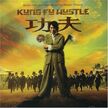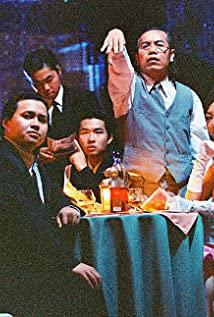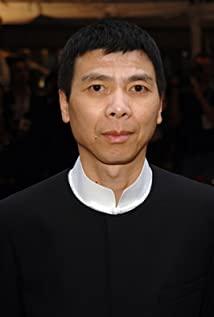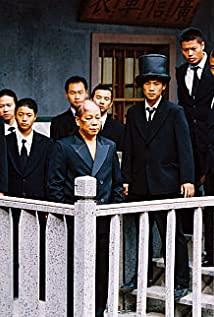Sarasati is a famous Spanish violinist and composer. Born in Pamplona, Spain in 1844 to a poor family. He learned the piano from his father when he was 5 years old, and made his debut at the age of 8, and was regarded as a prodigy. Its playing skills are exquisite, and the tone is sweet and pure, so it is called "Paganini Rebirth" by later generations. Famous composers of his generation such as Bruch, Saint-Saens, Wieniawski, Dvorak and others have created violin works dedicated to him. During his lifetime, he composed a large number of violin solos and concertos, which greatly enriched the expressive power of the violin. The representative work is the violin solo "Wanderer's Song" (also known as "Gypsy Song"), the author depicts the characteristics of the Gypsy nation with a very appropriate handwriting, which is an immortal masterpiece in the violin solo. Sarasati's work is very particular about effect and technique from beginning to end, and it is pure violin work. This piece of music is the most well-known masterpiece among all Sarasati's works. The splendid effect intertwined with its soul-stirring sentimental color and difficult and esoteric violin skills will make anyone fascinated after listening to it.
"Song of the Wanderer" is divided into four parts, about 8 minutes and 35 seconds. The first part (00:00-1:00): Middle plate, C minor, 4/4 time. It starts with a powerful orchestral unison, and then the lead violin plays a melancholy melody. This part is very short, just an introduction to the whole song. Part 2 (1:01-4:30): Adagio, a new melody by the violin, a beautiful melancholy, highly technically developed with variations and repetitions, light overtones and a gorgeous left hand The plucked strings show the richness of this theme. In this part, the orchestral music is less pronounced, and the theme is always the soft melody of the violin. The third part (4:31-6:13): a slightly slow adagio, 2/4 time. The violin is equipped with a mute, and the melody is full of sentimental "very expressive", and the sadness reaches its extreme. The fourth part (6:14-8:35): 2/4 time, rapidly changing into a very fast allegro, with a boldness that is in obvious contrast with the second and third parts, reflecting the gypsy national character who can sing and dance the other side. With the strong play of the orchestra as the forerunner, the violin played a very cheerful melody. The rapid plucking of the right hand and the glissando in the treble region were extremely happy; after this melody came to an end, a new melody was started with the plucking of the violin, and then It is a gossamer-like melody composed of staccatos of sixteenth notes, full of dance atmosphere; then the first part of the fourth part is reproduced with more technical pizzicato, gradually reaching a climax with vigor, and finally like lightning. End the song like this.
The movie "Kung Fu" tells the story of the young and dangerous boy played by Stephen Chow in China in the 1940s, determined to join the most powerful and cruel gangster "Axe Gang" at that time, and tried to live in a place called "Pig Cage Walled City". Blackmailing the residents, but not knowing that they all have unique skills, and ended up falling into trouble here. The conflict between Axing and the residents inadvertently involved the "Axe Gang" dramatically, and the struggle between the positive and negative factions officially started. From the "pig cage city" residents fighting for survival to the confrontation between two martial arts masters, Ah Xing gradually gave up his previous thoughts and aspirations and began to understand the true meaning of kung fu.
The plot of "Song of the Wanderer" begins at about 35:37 in the movie. It is the boss of the Axe Gang who tries Axing and asks Axing to kill himself as a stepping stone to join the gang. He wanted to kill the renter secretly because he had a holiday with the renter in Zhucang Walled City, but because of his poor skills, he inserted daggers into himself, and he mistakenly listened to Fei Zaicong's advice and whistled, causing the cobra to bite him. As a result, he was assassinated. The plan is discovered, and there is a chase scene with the charter wife. This episode is very exciting. Ah Xing, who is in tattered clothes, with daggers in his body and red lips, and the charter woman in pajamas with a cigarette in his mouth and his hair wrapped in curling irons, run away one after another. The director's treatment on the screen is romantic. The legs of the two protagonists are made into the animation because of their fast running. The music refers to the fourth part of the song. The extremely fast allegro enhances the mood of the film, and the cheerful rhythm of the violin invisibly accelerates the audience in experience. For the understanding of the characters' movements in the play, the speed has been improved. This piece of music lasted about 1 minute and appeared at 1/3 of the movie, which is a small climax. The music stops when the charterer flips in the air and hits a billboard on the side of the road. Immediately afterwards, Ah Xing used internal force to force the poison in the wiring box of the central indicator light at the intersection. His lips were red and swollen. Because of the pain, he violently tapped the metal boxes around him to leave fingerprints. From 36:50 to 37:41, the first part of the music suddenly appeared, with the percussion sound, I felt very painful, full of sadness and grief. The picture is dark, and the audience seems to be taken into that environment. Next, the screen lit up, Fat Tsai Cong appeared in the middle of the screen, and the music appeared slowly at 37:45, citing the second part of the music, the slow rhythm, just like Fat Tsai Cong's rigid appearance, and then Ah Xing was safe and sound Appearing in front of Fat Zaicong, there was a hint of joking. By 38:00, with the sound of a whistle, the parts of "Song of the Wanderer" referenced in the film are all over, but it is very memorable.
As a very successful commercial film, "Kung Fu" has achieved a double harvest at the box office. It has won a total of 24 honors nominated and won by Chinese and foreign film festivals, and it is also my favorite movie. The success of "Kung Fu" is not only the enhancement of technology, the shaping of actors, the matching of music, but more importantly, a good story, and expresses the feelings of Hong Kong in a unique way. The ideas conveyed by the film: chasing dreams, perseverance, forbearance, and love are all reflected in every character. This universal value is accepted and recognized by the public. Therefore, I look forward to seeing better movies, hearing better stories, and feeling better feelings, and I believe that Chinese movies can do it.
View more about Kung Fu Hustle reviews











